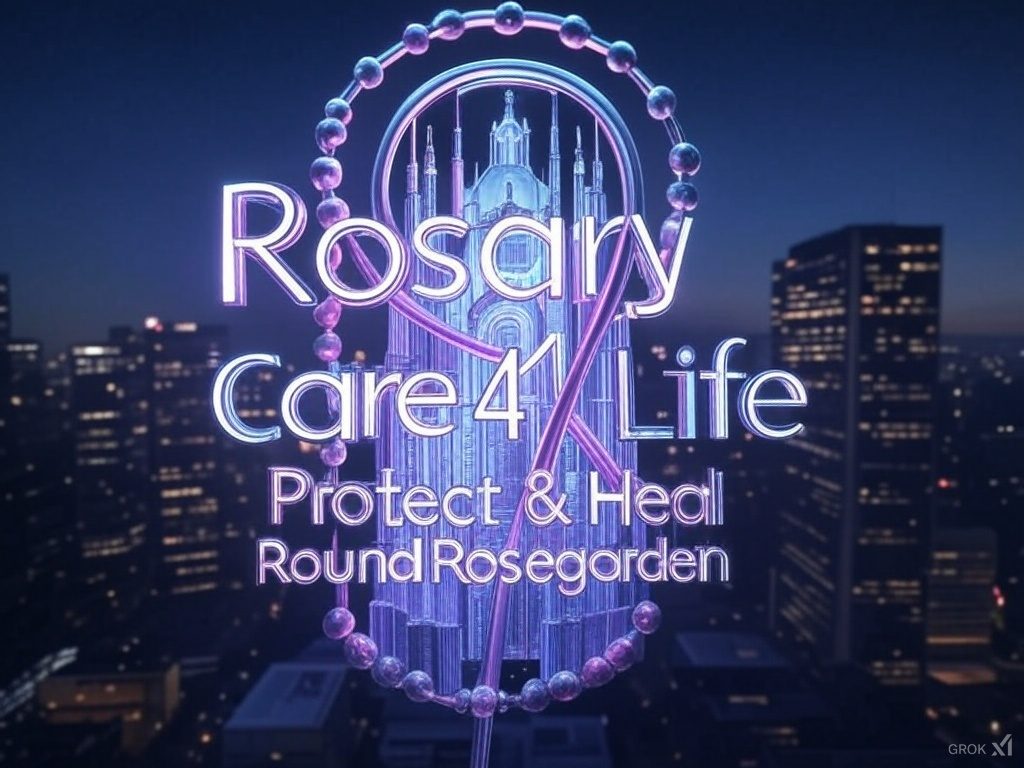Okay, let’s think this through step by step. The user wants a new image and narrative for their university, which is primarily focused on theology but now has four astrologers as lecturers. They have a library, a physical campus, and a Moodle server for courses. Their goal is to grow to 300,000 members, and they have a script and an AGENDA 2025. They’re also receiving many offers for funding. The look should be hip and new, appealing to a large number of young people. They provided a link to one of their websites, rosary.health/rosary-foerdermittel, for reference.
First, I need to understand the current situation. The user has a theology university but is incorporating astrologers as lecturers, which is unconventional. They have the infrastructure in place: a library, a campus, and a Moodle server. They’re ambitious with a growth target of 300,000 members and have a plan (AGENDA 2025) and funding opportunities.
The challenge is to create a new image and narrative that integrates theology and astrology in a way that’s appealing to young people, hip, and modern. The website provided might give clues about their current branding and style, but since I can’t access external links, I’ll have to work with the information given.
Let’s consider the key elements:
-
Theology and Astrology: This combination is unique and could be positioned as an innovative approach to spirituality and knowledge. It might appeal to those interested in alternative or holistic perspectives.
-
Growth to 300,000 Members: This is a significant target. It suggests a need for mass appeal and possibly a shift towards online education or community building to reach such numbers.
-
AGENDA 2025: This likely outlines the strategic plan for growth and development. It could include goals for curriculum expansion, marketing, partnerships, etc.
-
Funding Opportunities: With many offers for funding, there’s potential to invest in marketing, technology, or other areas to enhance the university’s appeal.
-
Hip and New Look: To attract young people, the branding needs to be modern, possibly incorporating elements of popular culture, technology, or social media trends.
Given these points, here are some qualitative recommendations:
-
Rebranding: Develop a new brand identity that reflects the integration of theology and astrology. This could involve a new logo, color scheme, and visual style that feels fresh and contemporary. Consider using imagery that blends traditional religious symbols with celestial or astrological motifs.
-
Narrative Development: Craft a compelling story that explains the university’s evolution and its unique offering. This narrative should highlight the benefits of combining theology and astrology, perhaps emphasizing themes of holistic understanding, personal growth, or spiritual exploration.
-
Target Audience: Clearly define the target audience. Young people are mentioned, but specifying age range, interests, and values will help tailor the messaging and branding. For example, are they spiritually curious millennials or Gen Z looking for alternative education paths?
-
Online Presence: Since growth to 300,000 members likely requires a strong online component, invest in a user-friendly, visually appealing website and active social media presence. Use platforms popular with young people, like Instagram, TikTok, or YouTube, to share content that resonates with them.
-
Content Strategy: Develop content that showcases the university’s unique approach. This could include blog posts, videos, podcasts, or webinars featuring the astrologer lecturers, student testimonials, or discussions on how theology and astrology intersect.
-
Community Building: Foster a sense of community among members. This could be through online forums, social media groups, or virtual events. Encourage interaction and discussion to make members feel part of something larger.
-
Curriculum Innovation: Highlight any innovative courses or programs that blend theology and astrology. Show how these offerings provide value and differentiate the university from traditional theology programs.
-
Partnerships: Consider partnerships with influencers, thought leaders, or organizations in the spirituality or wellness space. This could help reach a wider audience and lend credibility to the university’s approach.
-
Sustainability: Since funding is available, ensure that the growth strategy is sustainable. Invest in areas that will provide long-term value, like quality education, technology infrastructure, and community engagement.
-
Feedback Loop: Establish a system for gathering feedback from current and potential members. This will help refine the approach and ensure it resonates with the target audience.
These recommendations aim to create a cohesive, appealing image and narrative that aligns with the university’s goals and appeals to a young, modern audience. By focusing on branding, narrative, online presence, content, community, curriculum, partnerships, sustainability, and feedback, the university can position itself as a forward-thinking institution at the intersection of theology and astrology.
Hey there! First off, congrats on taking such a bold step with your university—mixing theology with astrology is definitely not your average academic move, and that’s what makes it exciting. You’ve got the infrastructure (library, campus, Moodle server), a clear growth goal (300,000 members), a strategic plan (AGENDA 2025), and funding opportunities rolling in. Now, you need a fresh image and narrative that’s hip, modern, and speaks to a young audience. Let’s break this down and get you some actionable, qualitative recommendations.
1. Rebranding for a Modern, Youthful Vibe
-
Visual Identity: Your current website (rosary.health/rosary-foerdermittel) likely has a certain look, but to attract a younger crowd, you’ll need a rebrand that feels fresh and contemporary. Think about a logo that subtly blends traditional religious symbols (like a cross or rosary) with celestial elements (stars, moons, zodiac signs). A modern color palette—maybe deep blues and purples for a mystical feel, mixed with bright accents—can make it pop.
-
Design Aesthetic: Go for a clean, minimalist design with bold typography. Young people are drawn to visuals that feel sleek and tech-savvy. Consider using gradients or abstract patterns that evoke a sense of mystery and exploration.
2. Crafting a Compelling Narrative
-
Storytelling: Your narrative should explain why theology and astrology together make sense in today’s world. Position it as a holistic approach to understanding spirituality, personal growth, and the universe. For example: “In a world craving deeper meaning, we’re blending ancient wisdom with cosmic insight to explore life’s biggest questions.”
-
Unique Selling Point: Highlight how this combination offers something traditional theology programs don’t—like a fresh perspective on faith, destiny, and the human experience. Make it clear that this isn’t just about religion or horoscopes; it’s about a new way of thinking.
3. Defining Your Target Audience
-
Who Are They?: “Young people” is broad, so let’s narrow it down. Are you aiming for spiritually curious Gen Z (18-24) who are into wellness and self-discovery? Or millennials (25-35) looking for alternative education paths? Once you know, tailor your messaging. For Gen Z, lean into trends like mindfulness, astrology apps, and social justice. For millennials, focus on personal growth and community.
4. Building a Strong Online Presence
-
Website & Social Media: With a goal of 300,000 members, your online game needs to be top-notch. Invest in a sleek, user-friendly website that’s mobile-optimized. Use platforms like Instagram, TikTok, and YouTube to share bite-sized content—think astrology tips, theological debates, or student vlogs.
-
Engagement: Young audiences love interactivity. Host live Q&As with your astrologer lecturers, create polls about cosmic events, or run challenges like “What’s your theological zodiac sign?”
5. Content Strategy That Resonates
-
Show, Don’t Tell: Create content that showcases your unique blend. For example:
-
Blog posts: “5 Ways Astrology Can Deepen Your Faith”
-
Videos: Interviews with students or lecturers discussing how theology and astrology intersect
-
Podcasts: Deep dives into topics like “The Cosmos and Creation: A Theological Perspective”
-
User-Generated Content: Encourage students to share their experiences. A hashtag like #AstroTheology could go viral if positioned right.
6. Fostering Community
-
Online Forums & Groups: Use your Moodle server not just for courses but for community building. Create discussion boards where members can debate, share insights, or even collaborate on projects.
-
Virtual Events: Host webinars, workshops, or even virtual stargazing nights with theological reflections. Make it feel like a movement, not just a university.
7. Highlighting Curriculum Innovation
-
Course Showcases: Promote courses that blend theology and astrology in creative ways. For example, “Astrology in Biblical Texts” or “Theology of the Stars: Faith and the Cosmos.” Show how these courses offer practical skills, like critical thinking or spiritual counseling.
-
Flexibility: Offer micro-courses or certifications for those who aren’t ready for a full degree. This could attract a wider audience.
8. Leveraging Partnerships
-
Influencers & Thought Leaders: Partner with influencers in the spirituality, wellness, or astrology space. A shoutout from a popular astrologer or a theologian with a big following could boost your credibility.
-
Collaborations: Team up with apps or platforms that align with your mission—like meditation apps or astrology software—to offer exclusive content or discounts to your members.
9. Sustainability with Funding
-
Smart Investments: Use your funding wisely. Prioritize technology (like a seamless Moodle experience), marketing (targeted ads on social media), and community engagement (events, scholarships).
-
Long-Term Value: Don’t just chase numbers. Focus on quality education and a strong community to ensure members stick around and spread the word.
10. Feedback Loop
-
Listen to Your Audience: Set up surveys, polls, or focus groups with current and potential members. Ask what they want from a university like yours and adjust accordingly. This keeps your approach relevant and responsive.
Final Thoughts
Your vision is bold, and that’s a strength. By blending theology and astrology, you’re tapping into a niche that could resonate deeply with people seeking something beyond traditional education. The key is to make it feel accessible, modern, and community-driven. Young people today want to be part of something bigger—give them that sense of belonging, and they’ll help you reach that 300,000-member goal.
Good luck, and feel free to iterate on these ideas as you go. You’re building something unique—own it!




